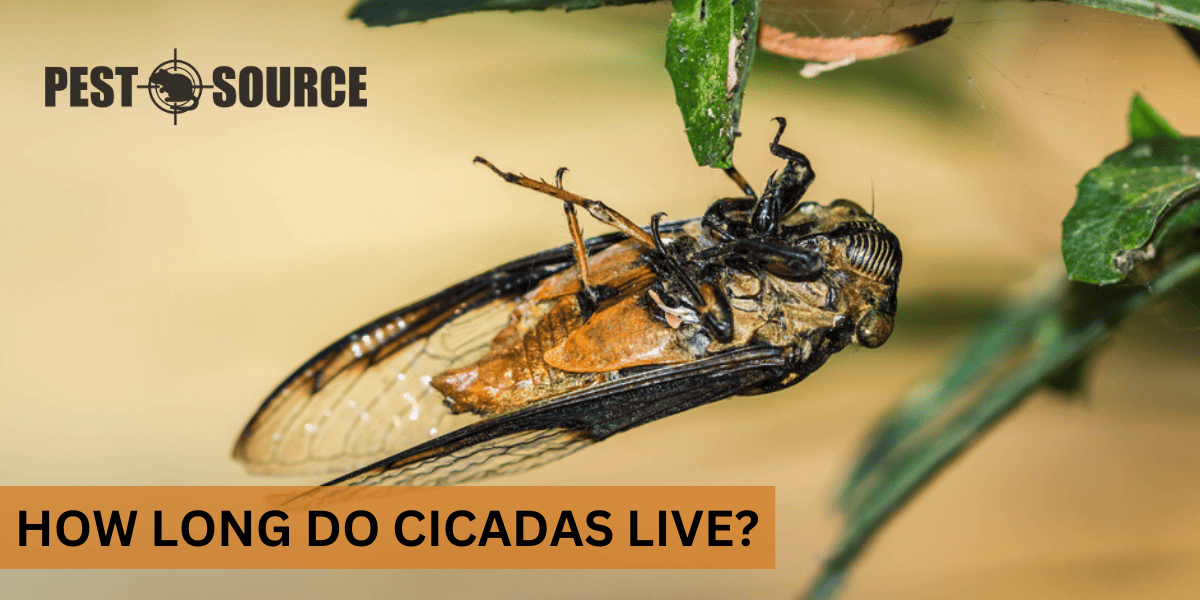Cicadas live for 2 to 17 years, depending on the species. Most of this time is spent underground as nymphs. After emerging, adult cicadas live for about 4 to 6 weeks, just long enough to mate and lay eggs. Discover the lifecycle of cicadas and the significance of their brief adult life.
POINTS
- Cicadas have one of the longest lifespans among insects, with periodical cicadas living 13 or 17 years and annual cicadas living 2 to 5 years.
- The majority of a cicada’s life is spent underground as a nymph, where they feed on sap from tree roots, with periodical cicadas spending 13 or 17 years and annual cicadas 2 to 4 years.
- The adult stage of a cicada’s life is brief, lasting only 4 to 6 weeks, during which they mate and lay eggs before dying.
- Adult cicadas’ lifespan can be affected by predation, weather conditions, and habitat disruption.
Cicada Lifespan
Cicadas are fascinating insects known for their distinctive sound and unique life cycle. The total lifespan of cicadas can be quite lengthy, considering both the underground nymph stage and the adult life above ground. Generally, cicadas fall into two categories: periodical and annual cicadas. Periodical cicadas, which are more widely known, have a life cycle that can span 13 or 17 years depending on the species. On the other hand, annual cicadas, which are not truly annual but are seen every year due to overlapping generations, typically live a shorter cycle of 2 to 5 years.
How Long Do Cicadas Live Underground?
Cicadas spend the majority of their lives underground as nymphs. For periodical cicadas, this stage can last either 13 or 17 years, while annual cicadas spend about 2 to 4 years beneath the surface. The time spent underground is crucial for their development, as nymphs feed on sap from tree roots during this phase.
The duration of the nymph stage is influenced by various factors, including species, climate, soil conditions, and the availability of food sources. The biological and environmental reasons for the variation in this phase are often tied to evolutionary adaptations that help cicadas avoid predators and synchronize their emergence for breeding purposes.
What Is the Life Cycle of a Cicada?
The life cycle of a cicada is truly remarkable, encompassing several distinct stages:
- Egg: The female cicada lays eggs in slits she makes in the bark of a tree.
- Nymph: After the eggs hatch, the nymphs fall to the ground and burrow underground to find a suitable root from which to feed.
- Molting: Nymphs go through several stages of molting as they grow.
- Emergence: After the final nymphal stage, cicadas emerge from the ground, climb up trees, and molt for the last time to become adults.
- Adult: The cicadas spend their brief adult life mating and laying eggs before they die.
Unique events such as the synchronized emergence of periodical cicadas are a spectacle, often resulting in millions of cicadas appearing almost overnight. This synchronization, along with their subsequent molting, mating, and egg-laying, are all critical components of their life cycle.
How Long Do Cicadas Live Above Ground?
Once cicadas have emerged and molted into their adult form, their life above ground begins. This adult stage is surprisingly brief, lasting typically between 4 to 6 weeks for both periodical and annual cicadas. During this time, their primary activities are mating and laying eggs for the next generation. This short adult lifespan contributes to the misconception that cicadas are short-lived, when in reality, their overall life cycle is one of the longest among insects.
The adult stage is marked by the loud, distinctive mating calls of the males, which can be heard in choruses throughout the trees where they have emerged. This period is crucial for the continuation of the species, and once mating has occurred and eggs are laid, the adult cicadas’ life cycle comes to an end.
How Long Do Adult Cicadas Live?
After their final molt, adult cicadas experience a lifespan that is relatively short compared to their lengthy nymph stage. The adult lifespan varies slightly between different cicada broods, especially when comparing periodical to annual cicadas. However, the range is usually between 4 to 6 weeks.
The length of the adult phase is influenced by several factors, including predation, weather conditions, and habitat disruption. The cicadas’ above-ground behavior, such as their loud calls and tendency to congregate in large numbers, can make them vulnerable to predators, which affects their survival and overall lifespan.



